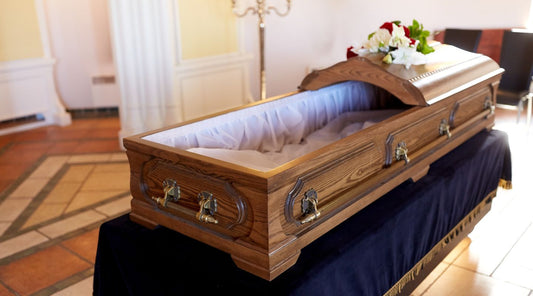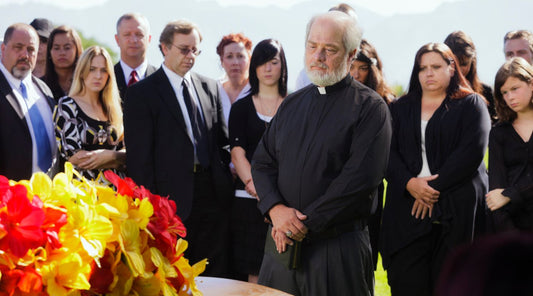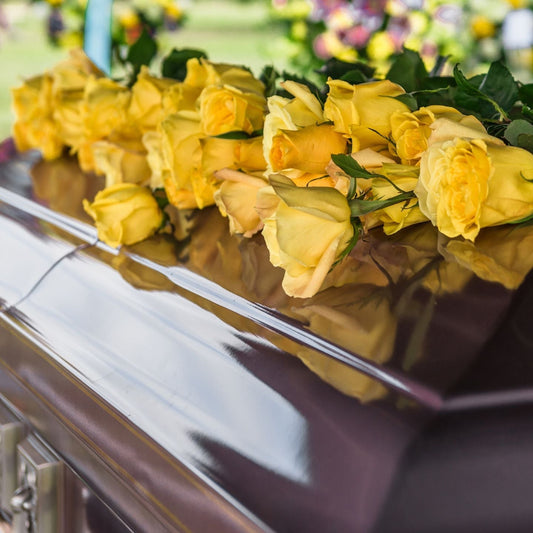
What are the world's most peculiar burial practices
We may be accustomed to the sombre rituals that are part of a traditional burial service where there's a gathering of loved ones and comforters that try to ease the grief of the bereaved family members. But, that's only a tiny portion of the vast types of rituals that are followed across the world. Some are pretty bizarre, considering it's a day of acknowledging that life is short and death is inevitable. If you're wondering, "what are the world's most peculiar burial practices?" then keep reading.
It's no lie that a few people out there are into morbid topics and don't mind reading the odd thing or two about things that may not be considered conversation starters. If you consider yourself in this category of individuals, this article is definitely for you. Here are a few of the most peculiar burial practices from different parts of the globe.
-
Tibet's Funeral Rituals

Amongst the Buddhists, it's a common practice to leave the dead remains of the dead out in the open. Some even go to the extent of cutting up the decease's body before leaving them in the open so that scavenging birds can feed upon the remains. This particular ritual is known as the Jhator or sky burial and is mainly followed by the Buddhists in Tibet and Mongolia.
The belief is that once the person dies, the soul immediately leaves the body, and the act of using their body to feed the wild birds and animals is seen as a token of charity performed by the deceased. This is an ancient ritual that dates back decades, and according to the Pasang Wangdu, 80% of Tibetans still opt for this ritual.
-
China's Funeral Rituals

Caskets are anchored on the face of rocky mountains, some barely visible from the ground beneath. These coffins that are 100 metres off the ground will probably make you wonder how people in the past could even get so high up to anchor them in and why this unconventional place is the final resting place of the deceased?
There are many theories and speculations that revolve around the hanging coffins of China, Indonesia and the Philippines. However, the most common ones are that they were places high above to honour the dead and keep them closer to the heavens. This act of elevating the bodies also displayed the respect of the loved ones for the deceased member.
The other common belief is more logical in the sense that people considered that if the bodies were buried below the ground, they would be dug up by animals for food.
-
The Philippines Funeral Rituals

The people of Tinguian village in the Philippines have a peculiar way of celebrating the life of the dead. They dress their deceased in the finest clothes and the body seated on the sangádel at the end of the house.
This seat is made of bamboo and rests on slats made of bamboo as well and is raised 3 feet above the ground. The act of dressing the dead can continue for several weeks, during which the surviving members and loved ones must complete a series of rituals to ensure the soul of the deceased moves on safely.
-
North America's Funeral Rituals

The Haida people have a special burial ritual for the most respected community members. When these individuals pass on, their remains are placed atop a totem pole, known as mortuary totem poles. This type of ceremony is usually reserved for the most revered individuals like shamans or chiefs.
The bodies are kept in a mortuary house and put in burial boxes to be erected at the top of the totem pole. These poles are placed in front of the home of the deceased.
-
Ancient Greece Funeral Rituals

During the 4th century BC, people in ancient Greece and even ancient Egypt would place thin gold plates near the deceased or roll the plates and insert them into capsules. These plates would contain instructions for the afterlife and were known as Totenpass, which translates to 'passport for the dead'.
These plates were usually discovered in the burial sites of the initiates of Orphic or Dionysian religions. The plates contained instructions like how to find the spring of Hades where the dead could wash away their mortal lives. These plates even contained a picture of the deceased.
-
South Korean Funeral Rituals

You may have heard about the death beads or cremation beads in South Korea, which are made with the remains of the deceased's cremated remains. What's curious about this ritual is that it's actually a very modern trend that began just a decade ago.
During the early 2000s, the country faced a shortage of burial spaces thanks to the increase in population. This led to the government passing laws that changed the burial rituals for the people of Korea.
If you're wondering why death beads? Well, the people in Korea don't find it appropriate to keep the ashes in urns or do not consider it adequate to honour their deceased by scattering their remains in nature. The beads were the perfect way to keep the remains of their loved ones close to them so that they could honour them appropriately.
-
Space

Yes! Space! The ash remains of the deceased are taken beyond Earth and usually scattered in the vastness of space or some extra-terrestrial body like the moon. The remains are typically taken into orbit but not spread completely into the emptiness so as to make sure those ashes do not become space debris.
The first space burial occurred in the year 1992. The remains of Roddenberry were taken up into space by the Space Shuttle Columbia from NASA, and it orbited the Earth, after which the remains were returned back to Earth once the mission was completed.
-
Papua New Guinea Funeral Rituals

If you're into smoked meats and barbeque, then this tradition of smoking the dead and preserving them as mummies may interest you. In the highlands of Papua New Guinea, the Asaki district's Anga people have a unique way of remembering their deceased. In order to preserve the remains of their loved ones, the Anga community first prepare the body by removing the internal organs and anything that may cause decay. After which, they heat the dead bodies over a fire to remove the moisture. Then the bodies are smothered in ocher and strung up on the hillsides.
This ritual is done in honour of the deceased as a sign of respect. The drippings collected after curing the dead body are massaged onto the bodies of the surviving members and the people of the community as a sign of transferring the energy and life of the deceased onto them.
-
Indian Funeral Rituals

India is known for its diversity and richness in culture; every region has unique practices and rituals for different periods of life, so it's no surprise that there are special rituals that celebrate death among the many traditions that celebrate life.
In the city of Varanasi, the dead bodies are dressed in colours that highlight their good virtues. For example, the colour red represents purity; the colour yellow represents knowledge etc and is taken on a funeral procession.
These bodies are then paraded through the streets of the city. This is done in an effort to encourage the soul of the deceased to reach salvation which will end the cycle of reincarnation. The bodies are finally taken to the banks of the Ganges River and sprinkled with its water which is considered holy by many religions in India. Once this is completed, the bodies are cremated in magnificent pyres in the city's main cremation grounds.
-
Iran Funeral Rituals

Within the ancient traditions of Zoroastrianism lies a very bizarre funeral tradition where the dead are raised on top of the tower of silence and exposed to the elements for decay. This is done to prevent the contamination of the soil and corpse. The dead body is kept in the Dakhma, the tower of silence; it is a circular raised structure.
The earliest remnants of this ritual can be dated back to the 5th century BCE. The bodies left at the top of the tower would become food for the scavenging animals and birds that roamed the area.
According to this tradition, people considered the deceased's corpse unclean. People feared that the body would contaminate anything it came into contact with or, worse, become possessed by evil spirits. Hence, the body was cleaned with bull urine before specific tools were used to undress them. These tools would then be destroyed and the bodies placed in the pit above the Dakhma.
These are, but a few of the most remarkable ways people and individuals from across the world celebrate the life of the dead or release the spirits of the deceased from the bodies. There are many unconventional ways to show your love and gratitude to those who have moved on, but what matters the most is the thought that goes into every detail of the funeral ceremony—and making it a memorable send-off for the life that is lost.
Blog Author: Tim


